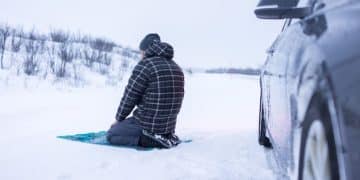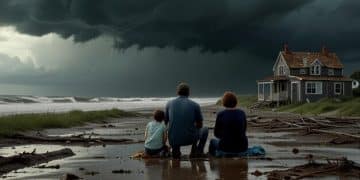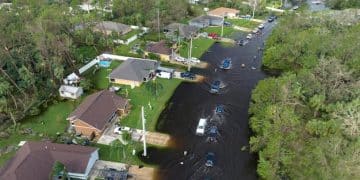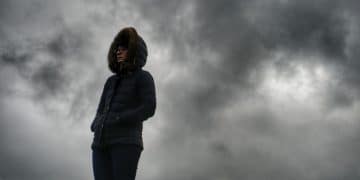Stay Safe: Your Guide to Extreme Cold Weather Preparedness
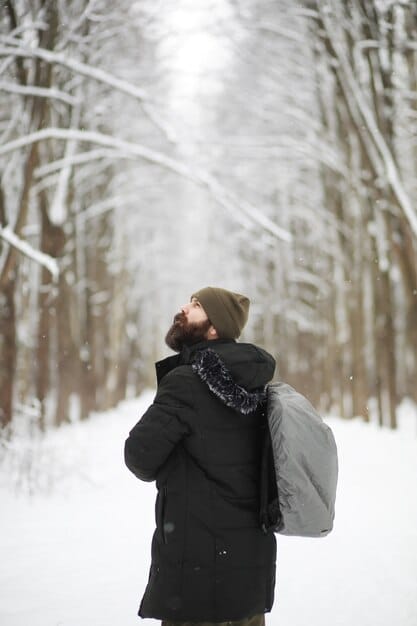
Navigating an extreme cold weather event requires proactive planning and immediate action to protect yourself and your loved ones from severe health risks and property damage.
As winter’s grip sometimes tightens to a dangerous extreme, understanding how to stay safe during an extreme cold weather event: a comprehensive guide becomes not just advisable but critical. These periods of intense cold can pose serious threats, from frostbite and hypothermia to power outages and frozen pipes. Being prepared, informed, and responsive can make all the difference in safeguarding your well-being and property.
Understanding the Dangers of Extreme Cold
Extreme cold, commonly defined as temperatures dropping significantly below freezing, often accompanied by wind chill, presents a range of serious health risks. It’s not just about feeling uncomfortable; prolonged exposure can lead to life-threatening conditions. Recognizing these dangers is the first step toward effective mitigation and safety.
The primary health concerns during extreme cold are hypothermia and frostbite. Hypothermia occurs when your body loses heat faster than it can produce it, leading to a dangerously low body temperature. Frostbite, on the other hand, is an injury caused by freezing of the skin and underlying tissues, most commonly affecting extremities like fingers, toes, ears, and the nose. Both conditions require immediate attention and can have severe, lasting consequences if not treated promptly.
Health Risks and Warning Signs
Understanding the signs of these cold-related conditions is crucial for timely intervention. Early detection can prevent serious harm and even save lives. Pay close attention to changes in your own body and those around you, especially children and the elderly who are often more vulnerable.
- Hypothermia: Shivering (may stop as condition worsens), confusion, slurred speech, drowsiness, shallow breathing, weak pulse, loss of consciousness.
- Frostbite: White or grayish-yellow skin, waxy appearance, numbness, tingling, or aching, then complete loss of feeling in the affected area.
Beyond direct physiological impacts, extreme cold can exacerbate existing medical conditions, such as cardiovascular and respiratory issues. The body works harder to maintain temperature, putting added strain on the heart and lungs. This elevated demand can be particularly dangerous for individuals with chronic diseases.
In conclusion, simply layering up is often insufficient without an awareness of the insidious ways cold can affect the body. Being vigilant for symptoms and understanding the critical need for prompt medical attention are essential components of staying safe. The environment, especially wind chill, significantly amplifies the perceived cold and accelerates heat loss, making seemingly tolerable temperatures rapidly dangerous.
Pre-Event Preparedness: Weeks Before the Cold Hits
Effective preparation for an extreme cold weather event begins long before the first snowflake falls. This proactive approach involves meticulous planning, securing essential supplies, and fortifying your home against the elements. Early readiness minimizes panic and maximizes safety when temperatures plummet.
Start by assessing your home’s insulation, ensuring all windows and doors are properly sealed to prevent heat loss. Check your heating system, having it serviced annually by a professional to ensure it’s in optimal working condition. A reliable heating source is paramount during sustained periods of extreme cold. Consider supplementary heating options, such as a well-maintained fireplace or a backup generator, ensuring they are used safely and with proper ventilation.
Home Winterization Essentials
Winterizing your home is about more than just keeping warm; it’s about protecting your property from damage. Frozen pipes can burst, causing extensive water damage and expensive repairs. Taking preventative measures now can save significant hassle later.
- Insulate Pipes: Wrap exposed pipes, especially those in unheated areas like basements, crawl spaces, and exterior walls, with insulation or heat tape.
- Draft-Proofing: Seal cracks around windows and doors with weatherstripping or caulk. Use draft stoppers under doors.
- Attic and Wall Insulation: Ensure adequate insulation in your attic and walls to prevent heat from escaping.
As part of your pre-event preparations, assemble a comprehensive emergency kit. This kit should sustain your household for at least 72 hours, potentially longer if services are disrupted. Include non-perishable food, bottled water, a first-aid kit, battery-powered or hand-crank radio, flashlights, extra batteries, and any necessary medications. Don’t forget provisions for pets and infants.
It’s also wise to prepare your vehicle. Have your car’s anti-freeze levels checked, ensure your battery is in good condition, and keep your fuel tank at least half full to prevent the fuel line from freezing. Stock your car with a winter emergency kit containing blankets, a shovel, sand or kitty litter for traction, jumper cables, and a cell phone charger.
Finally, establish a communication plan with family members. Designate an out-of-state contact as a check-in point if local communication lines are down. Knowing who to call and what to do in an emergency reduces stress and confusion during a crisis. These preparations, though seemingly minor, collectively form a robust safeguard against the potential adversities of extreme cold.
Immediate Actions: When the Cold Front Arrives
Once an extreme cold warning is issued, immediate actions are necessary to solidify your safety measures. The focus shifts from long-term preparation to short-term, critical adjustments. This phase is about minimizing exposure and ensuring all immediate needs are met, leveraging the preparations made weeks prior.
Firstly, stay indoors as much as possible. Limit outdoor activities to only what is absolutely essential. If you must go outside, inform someone of your plans and estimated return time. Dress in multiple layers of loose-fitting, lightweight clothing. These layers trap air, providing better insulation than a single thick garment. Outer layers should be wind and water-resistant.
Dressing for Extreme Cold
Proper layering is a science. Each layer serves a specific purpose, contributing to your overall thermal regulation. Avoiding cotton as a base layer is often recommended, as it absorbs moisture and loses its insulating properties when wet, potentially leading to rapid heat loss.
- Base Layer: Wicking materials like wool or synthetics to draw moisture away from your skin.
- Middle Layers: Insulating materials such as fleece or down to trap body heat.
- Outer Layer: Windproof and waterproof material to protect against elements.
Inside your home, maintain a consistent, warm temperature. Consider closing off unneeded rooms to concentrate heat in living areas. If you have any exposed pipes in unheated spaces, open cabinet doors under sinks to allow warmer air to circulate around them, helping to prevent freezing. Setting faucets to a slow drip can also relieve pressure in pipes and reduce the risk of bursting.
Ensure your carbon monoxide detectors are active and have fresh batteries, especially if you plan to use alternative heating sources like wood stoves or portable heaters. Carbon monoxide is an odorless, colorless gas that can be deadly. Never use outdoor heating equipment indoors, and always ensure proper ventilation for any indoor heating devices.
Lastly, conserve energy where possible to reduce the strain on the power grid. Turn off lights in unoccupied rooms, unplug unused electronics, and avoid operating major appliances during peak hours. This collective effort not only helps maintain grid stability but also reduces your energy usage during a potentially high-cost period. Swift, informed actions during an extreme cold event are crucial for personal safety and community resilience.

Safety Practices During Outdoor Exposure
While the primary advice during extreme cold is to stay indoors, sometimes outdoor exposure is unavoidable. Whether it’s to clear snow, check on neighbors, or due to an emergency, understanding how to safely navigate the frigid environment is paramount. Every minute spent outside demands heightened awareness and protective measures to prevent cold-related injuries.
When venturing out, wear appropriate clothing as previously detailed, emphasizing wind and water protection. However, it’s equally important to cover all exposed skin, as frostbite can occur very quickly in extreme conditions. Use a hat that covers your ears, a scarf or balaclava to protect your face, and insulated, waterproof gloves or mittens. High-quality waterproof boots with good insulation are also critical to protect your feet.
Minimizing Risks While Outdoors
Even with proper attire, prolonged exposure is dangerous. Plan your outdoor time carefully, aim for efficiency, and return indoors frequently to warm up.
- Limit Time Outdoors: Shorten trips outside as much as possible.
- Stay Dry: Wet clothing dramatically increases heat loss. Change into dry clothes immediately if they become wet.
- Recognize Symptoms: Be vigilant for signs of hypothermia or frostbite in yourself and others.
Physical activity, while generating body heat, also increases respiration rate, exposing airways to cold, dry air, which can be an issue for those with respiratory conditions. Furthermore, perspiration can lead to wet clothing, undermining insulation. Therefore, avoid strenuous activities if possible, and take frequent breaks. Staying hydrated is also crucial, as dehydration can impair your body’s ability to regulate temperature.
Walking on icy surfaces presents a significant risk of falls, leading to injuries like fractures. Wear footwear with good traction, walk slowly, and use handrails if available. Be aware of your surroundings, as ice can be transparent and difficult to spot. Clear snow and ice from walkways and driveways carefully, using appropriate tools and avoiding overexertion.
Checking on vulnerable neighbors—the elderly, those with disabilities, or individuals living alone—is a responsible community action. However, do so safely, ensuring your own warmth and security before venturing out. A quick phone call can often ascertain their well-being if direct contact is too risky. Every step taken outdoors during extreme cold must be weighed against its potential dangers, prioritizing safety above all else.
Emergency Preparedness: What to Do in a Power Outage
Extreme cold often brings with it the risk of power outages, which can quickly turn a challenging situation into a life-threatening one. Losing heat in sub-zero temperatures requires immediate, decisive action. Your emergency preparedness plan should account for prolonged periods without electricity, ensuring you have alternative sources of heat, light, and communication.
The moment power goes out, evaluate your heating options. If you have a fireplace, ensure your chimney is clean and functional, and stock enough firewood. If using a generator, operate it outdoors, at least 20 feet away from any windows or doors, to prevent carbon monoxide poisoning. Never attempt to heat your home with a gas stove or oven, as this also poses a severe risk of carbon monoxide buildup.
Alternative Heating and Safety
Knowing your alternatives and their safe operation is key to surviving a power outage in extreme cold. Improvised heating can be dangerous if not done correctly.
- Safe Space Heaters: Use electric space heaters with automatic shut-off features and tip-over protection, ensuring they are not near flammable materials.
- Propane/Kerosene Heaters: If approved for indoor use, ensure adequate ventilation to prevent carbon monoxide accumulation. Never use in enclosed spaces.
- Warm Clothing & Blankets: Rely on layers of blankets and sleeping bags in one room to conserve body heat, creating a warmer core area.
Communication becomes vital during an outage. Keep your cell phone charged and consider having a portable charger or power bank. A battery-powered or hand-crank radio can provide essential updates on weather conditions and restoration efforts. Limit opening your refrigerator and freezer doors to preserve food, as cold temperatures outside can sometimes be used to store perishables outdoors in sealed containers.
Remember that pipes can freeze and burst quickly without heat. If temperatures are consistently below freezing, consider temporarily turning off your main water supply and draining your pipes to prevent damage. This is a last resort but can save thousands in repairs.
Before an outage occurs, identify a designated “warm room” in your home, preferably an interior room with few windows, where your family can gather to conserve heat. Seal off this room from the rest of the house with blankets or towels under doors. This strategy concentrates the available heat, making it easier to maintain a safer indoor temperature. Being prepared for a power outage is a core component of extreme cold survival, demanding resourcefulness and an unwavering focus on safety.

Protecting Vulnerable Populations and Pets
During an extreme cold weather event, certain populations are at a significantly higher risk of adverse health outcomes. The elderly, infants, young children, individuals with chronic medical conditions, and those experiencing homelessness are particularly vulnerable. A compassionate and proactive approach is essential to ensure their safety and well-being.
For the elderly, diminished body fat, slower metabolism, and an inability to sense changes in temperature as effectively can make them more susceptible to hypothermia. Regular check-ins, whether in person or by phone, are crucial. Ensure their homes are adequately heated, and they have access to warm clothing, food, and water. Offer assistance with daily tasks that might become difficult in icy conditions, preventing falls.
Caring for the Most Vulnerable
Identifying and supporting those most susceptible to cold’s dangers is a community responsibility. Proactive outreach can save lives.
- Elderly: Check on them frequently, ensuring consistent heat and identifying any needs for assistance.
- Children: Dress infants and young children in layers, avoiding excessive outdoor exposure; car seats, for instance, limit bulky clothing.
- Homeless: Support local shelters and outreach programs, which provide critical warmth and resources.
Infants and young children also lose body heat more rapidly than adults due to their larger surface area to body mass ratio and less developed thermoregulation. Always dress them in layers, including a hat, even indoors if the house is cool. Avoid prolonged outdoor play when temperatures are extreme, and ensure their car seats don’t restrict the effectiveness of winter outerwear.
For individuals with chronic illnesses, extreme cold can exacerbate respiratory and cardiovascular conditions. Advise them to limit physical exertion, stay hydrated, and ensure their medications are readily accessible. Emergency services should be contacted immediately if their condition deteriorates.
Pets are also highly susceptible to cold-related injuries. Bring outdoor pets inside. If that’s not possible, ensure they have a warm, dry, insulated shelter with unfrozen water. Shorten walks for dogs, and consider booties to protect their paws from ice and salt. Never leave pets in vehicles during extreme cold, as cars can act like refrigerators, trapping cold and leading to hypothermia or death. Protecting the most vulnerable members of our society and our animal companions reflects a truly comprehensive approach to extreme cold safety.
Post-Event Recovery and Future Preparedness
Even after the immediate danger of an extreme cold weather event has passed, the recovery phase requires careful attention to health and home. The period immediately following a cold snap can still present risks, and it’s an opportune time to reflect on lessons learned for future preparedness. A systematic approach to recovery ensures a smoother transition back to normalcy and strengthens resilience against future climatic challenges.
Begin by slowly rewarming
anyone affected by hypothermia or frostbite, seeking medical attention as needed. If power was lost, gradually return your home to normal temperature. Inspect your home for any lingering issues, such as frozen or burst pipes. Turn on faucets slowly and monitor for leaks. If you suspect a burst pipe, immediately turn off the main water supply and contact a plumber. Check your heating system and other appliances to ensure they are functioning correctly and safely after any power fluctuations.
Learning from the Event
Every extreme weather event offers valuable lessons. Documenting your experiences and refining your preparedness plan is crucial for continuous improvement.
- Home Inspection: Thoroughly check pipes, heating systems, and insulation for any damage incurred during the cold.
- Restock Emergency Supplies: Replenish any used items in your emergency kit, checking expiration dates on food and medications.
- Review Communication Plan: Evaluate the effectiveness of your family communication plan and make any necessary adjustments.
Assess your emergency supplies. What worked well? What ran out quickly? Replenish any items used from your emergency kit, paying close attention to food, water, and battery stocks. Check the expiration dates on non-perishable food and medications. This post-event inventory helps you to refine your emergency supplies, making them more effective for the next unforeseen event.
Engage with your community to share experiences and best practices. Discuss common challenges faced during the event and identify collective strategies to address them. This community-level reflection can lead to stronger neighborhood watches, mutual aid networks, and improved public safety protocols. Participation in community emergency planning meetings can further solidify these efforts.
Consider investing in long-term home improvements that enhance cold weather resilience, such as upgraded insulation, energy-efficient windows, or a backup generator. While these may require a significant initial outlay, they can provide peace of mind and substantial savings in the long run. Embracing a mindset of continuous improvement based on real-world experiences is the most effective way to ensure lasting safety and preparedness against extreme cold weather events.
| Key Point | Brief Description |
|---|---|
| 🌬️ Understand Dangers | Recognize signs of hypothermia and frostbite. |
| 🏠 Home Winterization | Insulate pipes and seal drafts proactively. |
| 🚨 Emergency Kit | Assemble vital supplies for 72+ hours. |
| 🐾 Protect Vulnerable | Check on elderly, children, and pets; provide shelter. |
Frequently Asked Questions About Extreme Cold Safety
▼
The most immediate dangers are hypothermia and frostbite. Hypothermia occurs when your body temperature drops dangerously low, and frostbite is tissue damage from freezing. Both can occur rapidly with prolonged exposure to extreme cold, particularly when wind chill is a factor. Recognizing their symptoms and taking swift action is crucial for safety.
▼
To protect pipes, insulate exposed ones in unheated areas, open cabinet doors below sinks to allow warm air circulation, and consider letting faucets drip slowly during extreme cold. If leaving for an extended period, or during a power outage, turning off the main water supply and draining pipes can prevent costly damage.
▼
An extreme cold emergency kit should include essential items for at least 72 hours, such as non-perishable food, bottled water, a first-aid kit, battery-powered or hand-crank radio, flashlights with extra batteries, and any necessary medications. Don’t forget warm blankets, extra layers of clothing, and provisions for pets.
▼
No, it is never safe to use a generator indoors. Generators produce carbon monoxide, an odorless and colorless gas that can be fatal. Always operate generators outdoors, at least 20 feet away from any windows, doors, or vents to ensure proper ventilation and prevent carbon monoxide from entering your home.
▼
To dress safely for outdoor activities in extreme cold, use the layering method. Start with a wicking base layer (wool or synthetics), add insulating middle layers (fleece or down), and top with a windproof and waterproof outer layer. Always cover exposed skin with hats, scarves, gloves/mittens, and insulated boots.
Conclusion
Navigating an extreme cold weather event demands a multifaceted approach, blending proactive preparation with swift, informed actions. By understanding the inherent dangers, fortifying our homes, assembling essential emergency kits, and diligently protecting both ourselves and vulnerable populations, we can significantly mitigate the risks associated with plummeting temperatures. The lessons learned from each cold snap serve to refine our strategies, fostering greater resilience and ensuring that safety remains paramount. Staying vigilant, well-informed, and prepared is not merely a recommendation but a fundamental requirement for confronting the harsh realities of extreme cold.
